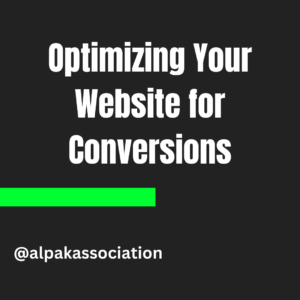Marketing Your Shopify Store: Tips & Tricks
In the competitive world of e-commerce, effectively marketing your Shopify store is essential for driving traffic, increasing sales, and building a loyal customer base. With the right strategies and tactics, you can elevate your brand and stand out in a crowded marketplace. In this guide, we’ll explore actionable tips and tricks for marketing your Shopify store to maximize your online presence and grow your business.
1. Introduction to Marketing Your Shopify Store
Importance of marketing for Shopify store owners
Marketing plays a crucial role in the success of your Shopify store by increasing brand visibility, attracting potential customers, and driving conversions. Effective marketing strategies help you reach your target audience, differentiate your brand, and establish a competitive edge in the market.
Overview of effective marketing strategies
Successful marketing involves a combination of tactics across various channels, including social media, email, SEO, and influencer partnerships. By leveraging multiple marketing channels and techniques, you can reach customers at different touchpoints in their buyer’s journey and drive engagement and sales.
2. Building a Strong Brand Identity

Defining your brand values and mission
Establish a clear brand identity by defining your core values, mission statement, and unique selling propositions. Communicate your brand story and personality to connect with your target audience on a deeper level.
Designing a memorable logo and visual assets
Create a visually appealing and cohesive brand identity with a professionally designed logo, color palette, and visual assets. Consistent branding across your website, social media profiles, and marketing materials reinforces brand recognition and credibility.
Creating consistent brand messaging across all channels
Ensure consistency in your brand messaging and tone of voice across all marketing channels and touchpoints. Align your messaging with your brand values and target audience preferences to build trust and authenticity.
3. Optimizing Your Website for Conversions

Improving website speed and performance
Optimize your Shopify store for speed and performance to provide a seamless user experience and reduce bounce rates. Minimize page load times, optimize images, and leverage caching and compression techniques.
Streamlining the checkout process
Simplify the checkout process to reduce friction and cart abandonment rates. Offer guest checkout options, minimize form fields, and provide multiple payment methods to accommodate customer preferences.
Implementing persuasive product descriptions and imagery
Craft compelling product descriptions and use high-quality imagery to showcase your products effectively. Highlight key features, benefits, and unique selling points to persuade customers to make a purchase.
4. Leveraging Social Media Marketing
Identifying the most relevant social media platforms for your target audience
Identify the social media platforms where your target audience spends the most time and focus your efforts on building a presence on those channels. Choose platforms that align with your brand identity and product offerings.
Creating engaging content that resonates with your audience
Create a content strategy that resonates with your target audience’s interests, preferences, and pain points. Share valuable and relevant content, including product tutorials, user-generated content, behind-the-scenes footage, and lifestyle imagery.
Utilizing paid advertising to expand your reach
Invest in paid advertising campaigns on social media platforms to expand your reach and drive targeted traffic to your Shopify store. Experiment with different ad formats, targeting options, and campaign objectives to maximize ROI.
5. Email Marketing Campaigns
Building an email list of subscribers
Build an email list of subscribers by offering incentives such as discounts, exclusive offers, or content upgrades in exchange for email sign-ups. Use pop-up forms, exit-intent overlays, and landing pages to capture leads.
Sending personalized and targeted email campaigns
Segment your email list based on customer demographics, purchase history, and engagement levels to send personalized and targeted email campaigns. Tailor your messaging and offers to meet the specific needs and preferences of each segment.
Automating email sequences for abandoned carts and follow-ups
Set up automated email sequences to recover abandoned carts and re-engage inactive subscribers. Send reminder emails, discount offers, and product recommendations to encourage customers to complete their purchase or re-engage with your brand.
6. Influencer Partnerships and Collaborations
Identifying influencers in your niche
Research and identify influencers in your niche who have a significant following and engagement with your target audience. Look for influencers whose values and content align with your brand and product offerings.
Reaching out to potential collaborators
Reach out to potential influencers via email, direct message, or influencer marketing platforms to introduce your brand and propose collaboration opportunities. Personalize your outreach and clearly communicate the value proposition for both parties.
Negotiating partnerships and measuring ROI
Negotiate terms and agreements with influencers, including compensation, deliverables, and campaign timelines. Set clear objectives and key performance indicators (KPIs) to measure the success and ROI of influencer partnerships.
7. Search Engine Optimization (SEO)
Optimizing product pages and content for relevant keywords
Optimize your product pages and website content for relevant keywords and search queries to improve visibility and organic traffic. Conduct keyword research to identify high-volume, low-competition keywords to target.
Building backlinks and improving website authority
Build backlinks from reputable websites and online publications to improve your website’s authority and search engine rankings. Focus on earning natural backlinks through high-quality content, guest blogging, and outreach efforts.
Monitoring and analyzing SEO performance metrics
Track key SEO performance metrics such as organic traffic, keyword rankings, and click-through rates (CTR) using tools like Google Analytics and Google Search Console. Analyze trends and insights to identify opportunities for optimization and improvement.
8. Running Promotions and Discounts
Creating limited-time offers and flash sales
Generate excitement and urgency among your audience by running limited-time promotions and flash sales. Offer discounts, free shipping, or exclusive deals to incentivize purchases and drive sales.
Offering discounts to first-time customers or email subscribers
Reward first-time customers or email subscribers with special discounts or welcome offers to encourage them to make a purchase and become loyal customers. Use pop-up forms or email sign-up incentives to capture leads and convert them into customers.
Collaborating with other brands for joint promotions
Partner with complementary brands or influencers for joint promotions and collaborations. Cross-promote each other’s products or services to reach new audiences and expand your customer base.
9. Providing Exceptional Customer Service
Offering multiple support channels (live chat, email, phone)
Provide multiple channels for customers to reach out for support, including live chat, email, and phone support. Offer prompt and helpful assistance to address customer inquiries, resolve issues, and provide personalized recommendations.
Responding promptly to customer inquiries and concerns
Prioritize responsiveness and timely communication when interacting with customers. Acknowledge inquiries and concerns promptly, provide transparent updates on order status or resolution progress, and follow up to ensure customer satisfaction.
Collecting and leveraging customer feedback for improvement
Solicit feedback from customers through surveys, reviews, and feedback forms to gather insights and identify areas for improvement. Use customer feedback to refine your products, services, and overall customer experience.
10. Analyzing and Iterating
Tracking key performance metrics (traffic, conversion rates, sales)
Regularly monitor and analyze key performance metrics to evaluate the effectiveness of your marketing efforts. Track metrics such as website traffic, conversion rates, average order value, and customer lifetime value to measure success and identify areas for optimization.
A/B testing different marketing strategies and tactics
Experiment with A/B testing to compare different marketing strategies, messaging variations, and campaign elements. Test variables such as ad creatives, landing page designs, email subject lines, and call-to-action buttons to identify what resonates best with your audience.
Making data-driven decisions to optimize marketing efforts
Use data and insights from analytics tools to make informed decisions and optimize your marketing efforts. Identify trends, patterns, and opportunities for improvement, and adjust your strategies and tactics accordingly to achieve better results.
11. Conclusion
Marketing your Shopify store effectively requires a strategic approach, creativity, and continuous optimization. By implementing the tips and tricks outlined in this guide, you can elevate your brand, attract more customers, and drive sustainable growth for your e-commerce business.
FAQs (Frequently Asked Questions)
- How can I measure the success of my marketing efforts on Shopify?
- You can measure the success of your marketing efforts on Shopify by tracking key performance metrics such as website traffic, conversion rates, sales, customer acquisition cost (CAC), and return on investment (ROI).
- What are some effective ways to increase website traffic to my Shopify store?
- Some effective ways to increase website traffic to your Shopify store include optimizing your website for SEO, running paid advertising campaigns, leveraging social media marketing, and publishing high-quality content that resonates with your target audience.
- How can I improve my Shopify store’s conversion rate?
- You can improve your Shopify store’s conversion rate by optimizing your website design and user experience, offering compelling product descriptions and imagery, providing seamless checkout process, and implementing trust signals such as customer reviews and testimonials.
- Is it important to engage with customers on social media platforms?
- Yes, engaging with customers on social media platforms is crucial for building relationships, fostering brand loyalty, and driving engagement. Respond to comments, messages, and mentions promptly, and actively participate in conversations to build a community around your brand.
- How often should I review and update my marketing strategies on Shopify?
- It’s important to regularly review and update your marketing strategies on Shopify to adapt to changes in the market, consumer behavior, and industry trends. Aim to review your strategies at least quarterly and make adjustments as needed to stay competitive and relevant.

